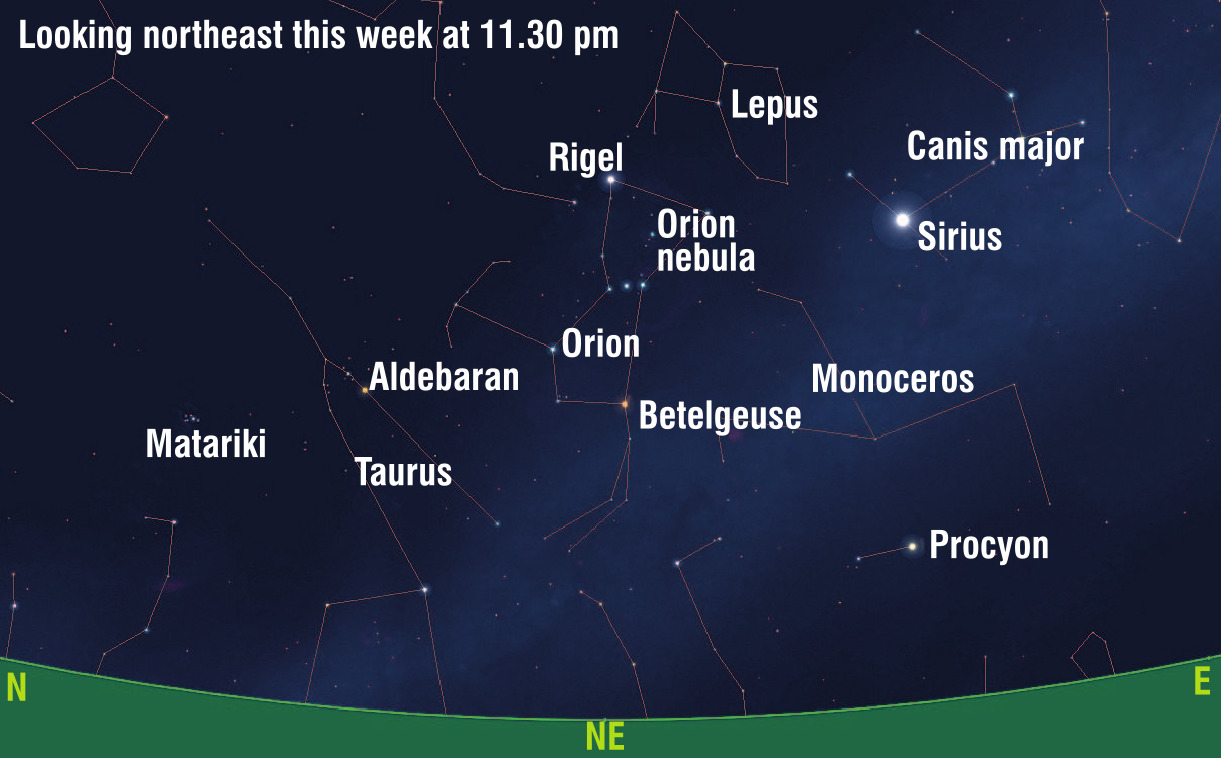

Orion teems with bright stars because it straddles the milky way. Astronomers have figured out that we live in a spiral galaxy. Orion and its surroundings form part of a spiral arm outside the one that is home to our solar system.
During winter, the beautiful star clouds of Scorpius and Sagittarius mark the location of the centre of our galaxy. In summer, when viewing the rich star fields of Orion, Taurus and Lepus we are looking away from the galactic core. We gaze outwards through a cosmic curtain of stars each of which takes more than two hundred million years to complete one orbit of the galaxy.
First-quarter moon occurred on Saturday.
Although moonlight washed out the dimmer stars, don’t let that put you off. This week is a great time to try and spot some of the summer constellations.
The stars forming Orion’s belt are a helpful guide. Project an imaginary line from the three stars in Orion’s belt to the left (and slightly downwards). The first bright star you come to is orange coloured Aldebaran. This is the brightest star in the constellation of Taurus, the bull. Aldebaran is a giant star whose distance is more than sixty-five light-years.
A second imaginary line projected from Orion’s belt upwards and to the right will eventually encounter Sirius. Located in the constellation of Canis Major (the Large Dog) Sirius is the brightest star in the sky.
Unlike Aldebaran, which is bright because it is a giant star, Sirius is bright because it is (relatively speaking) close to us. Astronomers have measured the distance to Sirius as 8.7 light-years.












